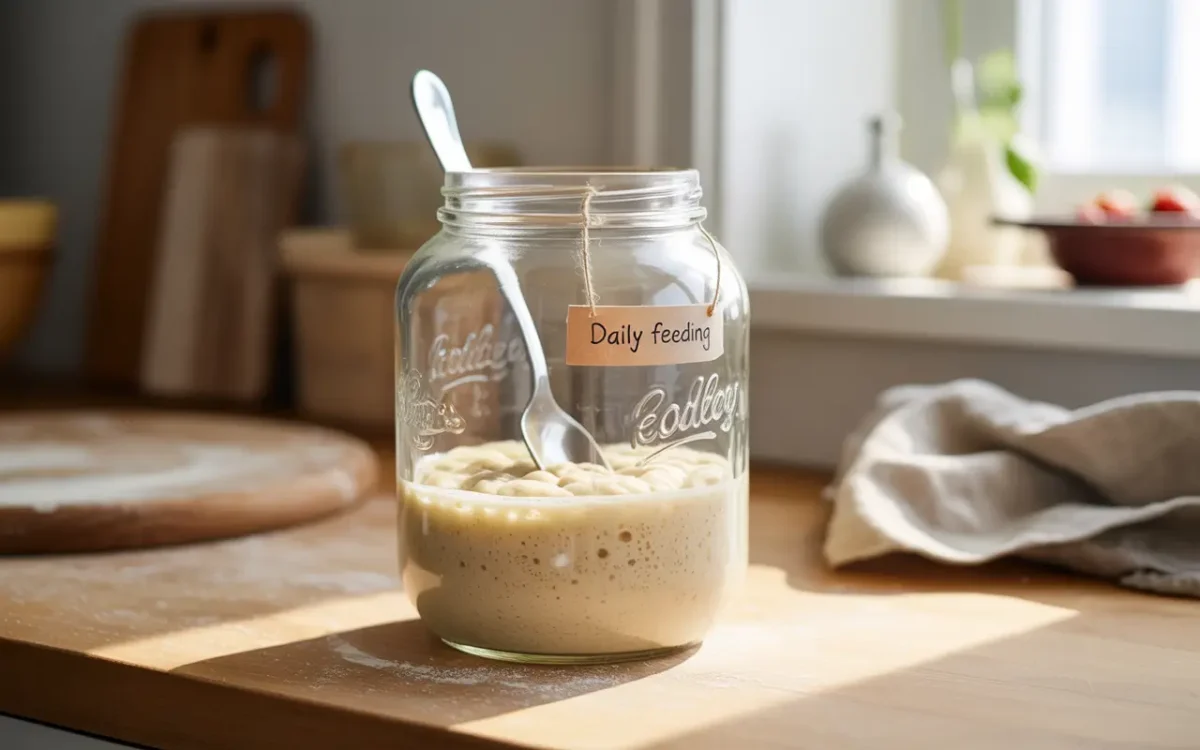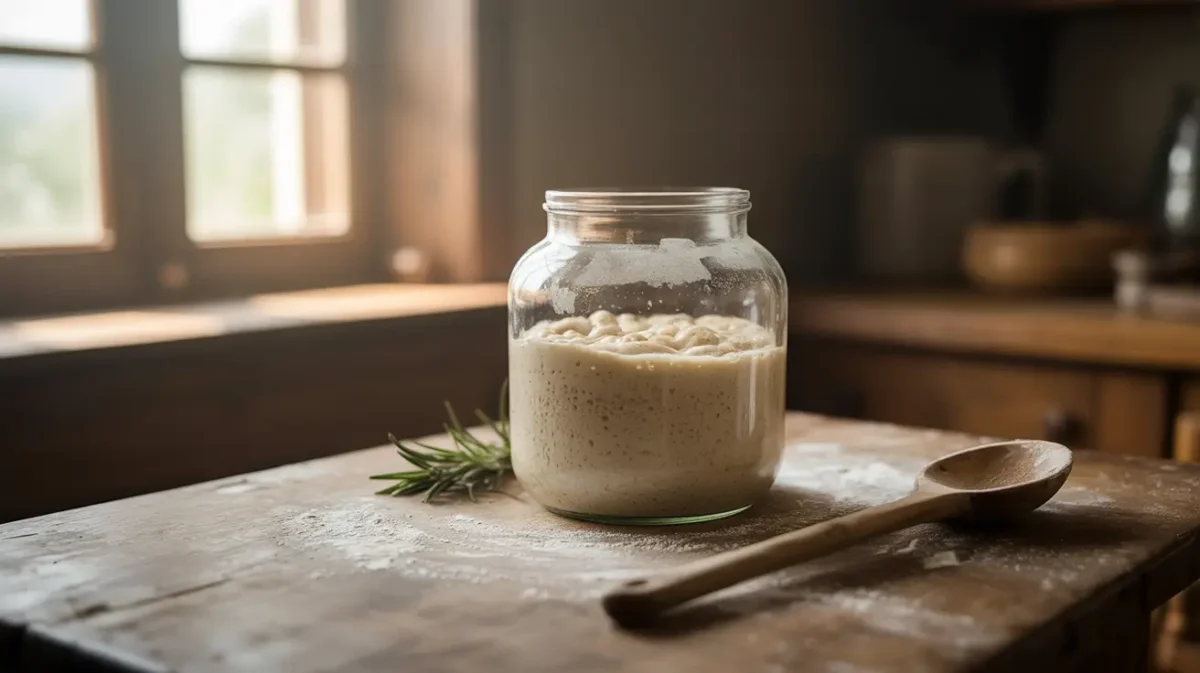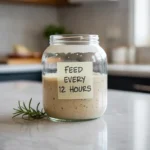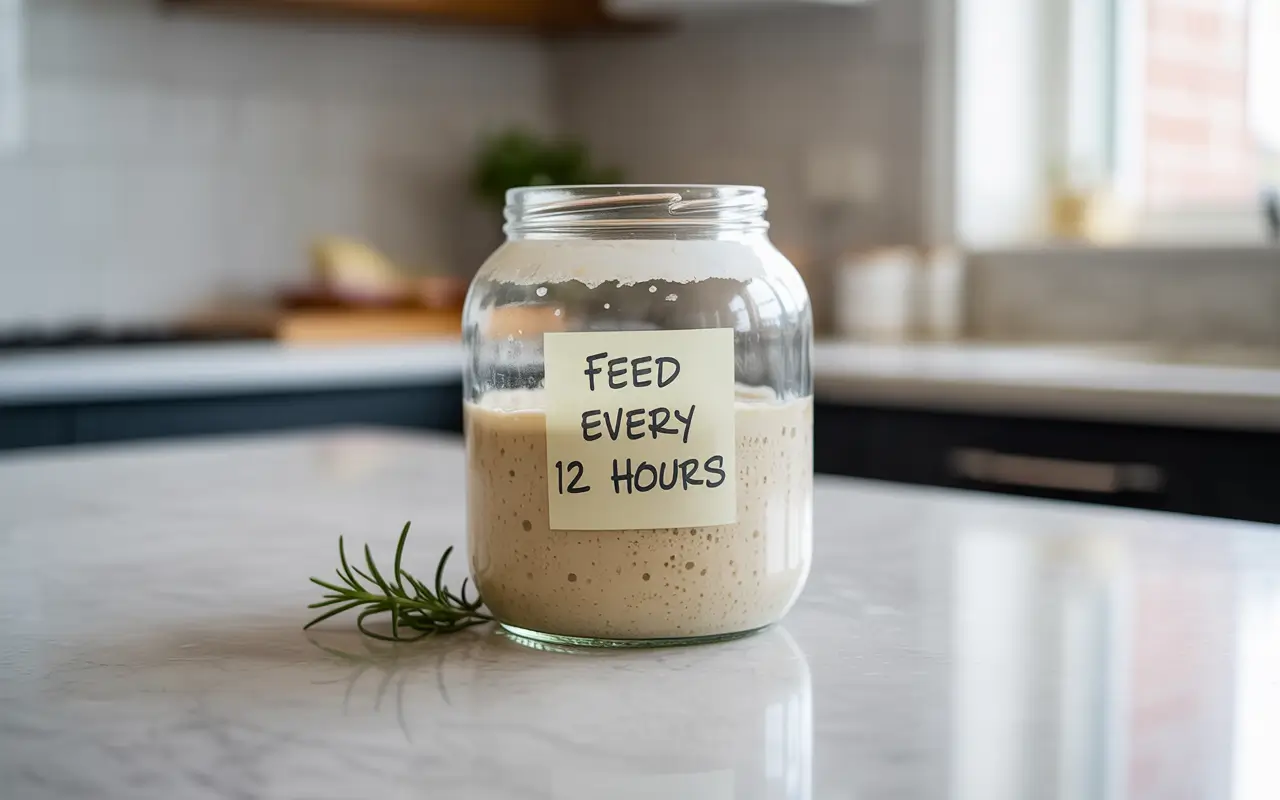How to Make a Sourdough Starter – A From Scratch Recipe
Introduction: The Magic of Sourdough
Are you ready to dive into the world of homemade bread? Whether you’re craving a slice of warm, crusty loaf or simply want to master the art of artisan baking, learning how to make a sourdough starter – a from scratch recipe is the perfect place to begin. In this guide, we’ll walk you through every step—from understanding what a starter culture is to maintaining it like a pro. Along the way, you’ll discover the fermentation magic behind sourdough, the right tools to use, and tips to keep your starter healthy.
Let’s jump into the heart of the sourdough journey!
PrintHow to Make a Sourdough Starter – A From Scratch Recipe
Learn how to make a sourdough starter – a from scratch recipe with just flour and water. Easy steps to create wild yeast for perfect homemade bread.
- Prep Time: 5 minutes per day
- Cook Time: 5–7 days fermontation time
- Total Time: 5–7 daystarter (enough for multiple loaves)
- Yield: 1 sourdough starter (enough for multiple loaves) 1x
Ingredients
-
100g whole wheat flour (for Day 1)
-
300g unbleached all-purpose flour (for Days 2–7)
-
400ml filtered water (room temperature)
Instructions
Day 1:
-
In the glass jar, mix 50g whole wheat flour with 50g filtered water.
-
Stir until smooth. Cover loosely with cloth. Let it rest in a warm place (68–75°F / 20–24°C).
Day 2–7:
-
Discard half of the mixture (around 50g).
-
Feed with 50g all-purpose flour and 50g filtered water.
-
Stir, cover, and rest. Repeat daily at the same time.
By Day 5–7:
-
Your starter should be bubbly, tangy-smelling, and double in volume 4–6 hours after feeding.
-
Test readiness with the “float test” (drop a spoonful into water—it should float).
Notes
-
Use your starter once it’s consistently rising and passing the float test.
-
Refrigerate and feed once weekly if not baking daily.
-
Discard can be used in sourdough burger buns or pancakes!
The Magic of Sourdough
Why Sourdough?
If you’ve ever tasted sourdough bread, you know it’s not your average loaf. Its crisp crust, chewy texture, and mildly tangy flavor make it a fan favorite. But there’s more than taste to love. Sourdough is naturally leavened, which means it rises without commercial yeast. Instead, wild yeast and bacteria do the heavy lifting.
And let’s be honest, there’s something magical about baking bread from a culture you raised yourself. When you understand how to make a sourdough starter – a from scratch recipe, every bite of bread becomes that much more rewarding.
The Importance of a Starter
At the center of sourdough baking is the starter—a living mixture of flour and water that’s alive with natural yeast and lactic acid bacteria. This is your personal leavening powerhouse. Learning how to make a sourdough starter – a from scratch recipe gives you the tools to craft bread with superior flavor and texture using just the simplest ingredients.
What is a Sourdough Starter?

Understanding the Basics
A sourdough starter is a fermented mix of flour and water that naturally captures wild yeast and good bacteria. This homemade culture acts as your natural leavening, replacing store-bought yeast entirely.
The Fermentation Process
When you know how to make a sourdough starter – a from scratch recipe, you’ll see how the daily feeding process encourages fermentation. This produces gases (CO₂) that help your dough rise and organic acids that create that signature sour flavor.For a detailed microbiological explanation, visit http://King Arthur Baking’s sourdough guide on sourdough fermentation.
Ingredients and Tools Needed
Essential Ingredients
To make your own starter, you’ll only need:
- Unbleached all-purpose flour or whole wheat flour
- Filtered water
Recommended Tools
You’ll also want:
- A clear glass jar for visibility
- A digital scale for accurate feeding
- A wooden spoon or spatula
- A breathable cloth cover
When you’re learning how to make a sourdough starter – a from scratch recipe, these tools make the process clean, easy, and successful.
Step-by-Step Guide to Making a Sourdough Starter

Day 1: Mixing the Initial Starter
To begin your journey on how to make a sourdough starter – a from scratch recipe, combine 50g of whole wheat flour with 50g of filtered water in a clean glass jar. Stir until you achieve a smooth, thick batter. Cover the jar loosely with a breathable cloth or lid to allow airflow while keeping out contaminants. Place the jar in a warm spot, ideally around 70°F (21°C), to encourage fermentation.
Days 2–7: Feeding the Starter
Day 2: You might notice a few bubbles and a slight tangy smell—signs that wild yeast and bacteria are beginning to develop. Discard half of the starter (about 50g) and feed it with 50g of unbleached all-purpose flour and 50g of filtered water. Mix thoroughly and cover again.
Days 3–7: Continue the daily routine of discarding half of the starter and feeding it with equal parts flour and water. By Day 4 or 5, the starter should exhibit more bubbles, a pleasant sour aroma, and begin to double in size within 4–6 hours of feeding.
Signs of Readiness
Your starter is ready when it consistently doubles in size within 4–6 hours of feeding, has a bubbly surface, and emits a tangy, slightly yeasty aroma. To test its readiness, perform the float test: drop a small spoonful of the starter into a bowl of water. If it floats, it’s airy and ready to use in baking.
Maintaining and Storing Your Starter
Regular Feeding Schedule
To keep your sourdough starter healthy and active, maintain a consistent feeding schedule. If you bake frequently, keep the starter at room temperature and feed it daily with equal parts flour and water. For less frequent baking, store the starter in the refrigerator and feed it once a week.
Storage Tips
When refrigerating, ensure the starter is stored in a clean jar with a loose-fitting lid to allow gas to escape. Before using the refrigerated starter, bring it to room temperature and feed it at least once to reactivate the fermentation process. Regular maintenance ensures a robust and reliable starter for all your baking needs.
For more delicious recipes and baking inspiration, check out our Sourdough Burger Buns and Beef Sourdough Empanadas articles.
FAQs
Can I use my discard to make another starter?
Yes! Your discard contains enough wild yeast to kickstart a new starter.
Is it safe to make your own sourdough starter?
Absolutely. With clean tools and proper feeding, it’s safe and simple.
How to make any recipe sourdough?
Substitute commercial yeast with your starter, adjusting rise time and hydration.
What can I use if I don’t have a sourdough starter?
You can use instant yeast instead, but once you try how to make a sourdough starter – a from scratch recipe, you’ll never go back.
Conclusion – Embrace the Sourdough Journey
Now that you’ve learned how to make a sourdough starter – a from scratch recipe, your kitchen will never be the same. This bubbling jar of natural yeast is more than just an ingredient—it’s your ticket to flavorful, homemade baking. Time to feed that starter and bake up something amazing!
🍞 Explore More Sourdough Recipes
Once your starter is active, put it to good use with these delicious recipes:
-
Sourdough Burger Buns: Soft and fluffy buns perfect for your next cookout. Get the recipehightasty.com+2hightasty.com+2hightasty.com+2
-
Beef Sourdough Empanadas: Flaky crusts filled with savory beef. Try it nowhightasty.com+13hightasty.com+13hightasty.com+13
-
Sourdough Blueberry Bagels: A sweet and tangy twist on a breakfast classic. Bake them todayhightasty.com
Happy baking! 🥖



